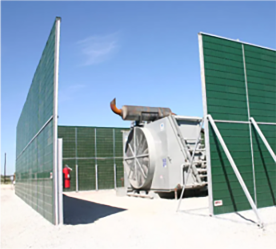Generator Noise Barrier Understanding and Mitigating Sound Pollution
Noise pollution is an ever-increasing concern in urban environments, where generators are common fixtures powering homes, businesses, and construction sites. The incessant hum of generators can significantly disturb the peace of residential areas and negatively impact the quality of life. To counteract this growing problem, the concept of generator noise barriers has emerged as a practical and effective solution for mitigating sound pollution.
Generator noise barriers are structures designed to absorb, deflect, or reflect sound waves emitted by generators. They can take various forms, including walls, fences, or other physical barriers made from sound-absorbing materials. The primary aim of these barriers is to reduce the noise level that reaches surrounding areas, providing a quieter and more hospitable environment.
The necessity of generator noise barriers can be understood by examining the sources of noise generated by these machines. Typically, generators produce sound through both mechanical vibrations and the combustion process. High decibel levels from these sources can lead to various health issues, including stress, hearing loss, and sleep disturbances. By implementing noise barriers, we can significantly curb these adverse effects.
When considering the design of a generator noise barrier, several factors come into play. Material selection is crucial; effective noise barriers are often made from dense materials, such as concrete or specially designed acoustic panels, which can absorb sound waves rather than allowing them to simply bounce off. Additionally, the height and positioning of the barrier are vital. A barrier must be large enough to block the line of sight between the generator and surrounding areas to be truly effective.
generator noise barrier

One innovative approach to generator noise barriers is the use of natural elements. Landscaping, such as dense shrubs and trees, can act as effective sound insulators. Not only do these natural barriers enhance the visual appeal of an area, but they also provide environmental benefits, such as improved air quality and increased biodiversity.
Moreover, the integration of technology in noise barrier design has led to the development of advanced solutions. For example, some noise barriers incorporate sound-dampening technology, such as active noise control systems that can detect sound waves and emit counteracting waves to reduce noise levels. These cutting-edge approaches enable more dynamic and effective noise cancellation, adapting in real-time to varying noise levels from generators.
It is also essential for communities and urban planners to consider the placement of generators in relation to residential areas. Understanding noise propagation and identifying optimal locations for generator installation can greatly reduce the need for extensive barriers. Well-planned generator placements, coupled with noise barriers, can create a balanced approach to energy needs and sound management.
In conclusion, generator noise barriers serve as a crucial element in the battle against noise pollution in urban settings. By combining effective materials, innovative designs, and strategic planning, communities can not only mitigate the disruptions caused by generators but also enhance the overall quality of life for residents. As urbanization continues to rise, the implementation of generator noise barriers will play an increasingly vital role in creating peaceful and harmonious living environments.
-
Versatility of Expanded Aluminum Metal for Various Applications
NewsMay.19,2025
-
The Geometry of Steel Gratings: Why It Matters
NewsMay.19,2025
-
Reinforcement Applications of Perforated Mesh in Masonry
NewsMay.19,2025
-
Essential Tools for Installing a Deck Mesh Railing
NewsMay.19,2025
-
Anti-Slip Flooring Made with Stainless Expanded Mesh
NewsMay.19,2025
-
Adjustable Steel Grating for Uneven Terrain
NewsMay.19,2025
Subscribe now!
Stay up to date with the latest on Fry Steeland industry news.

